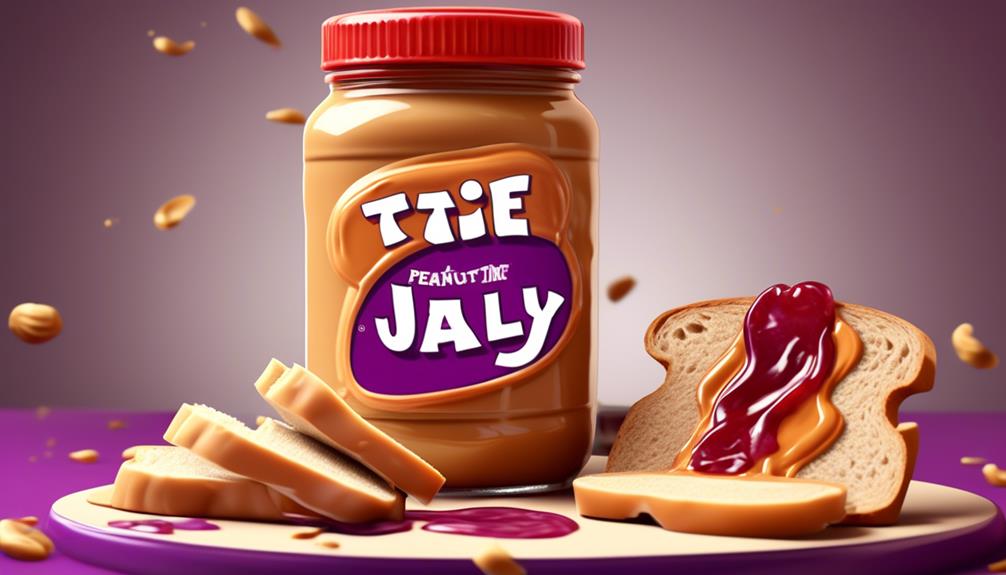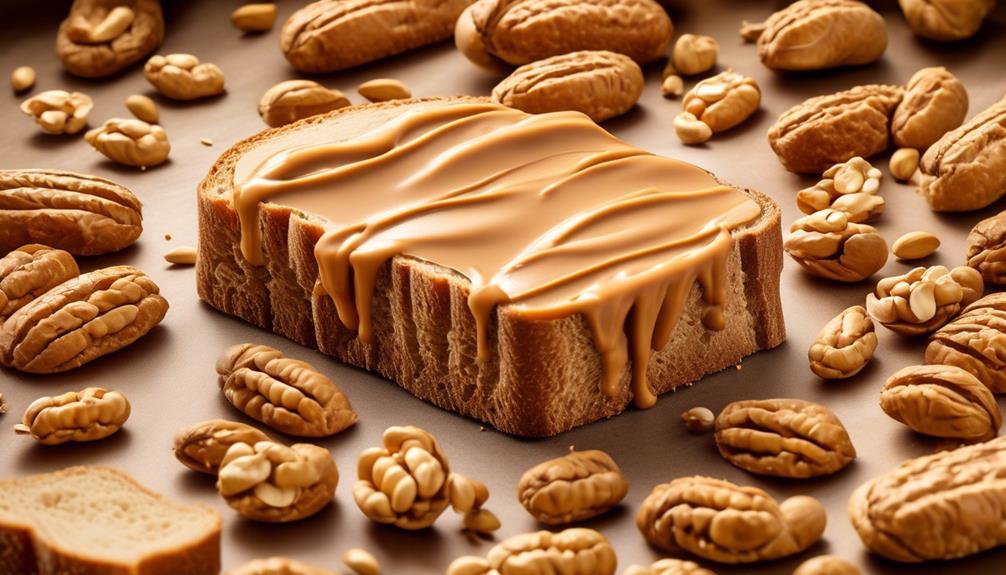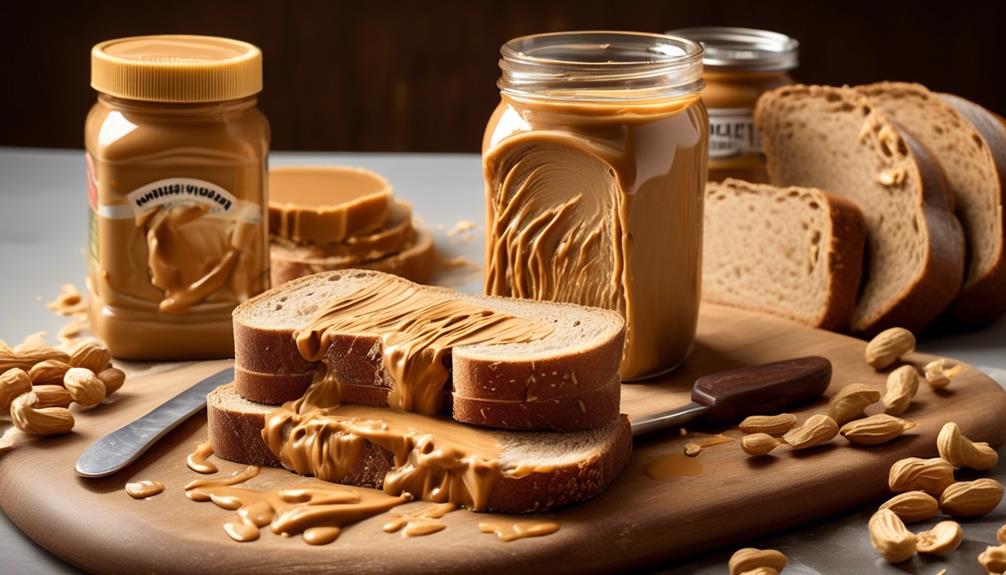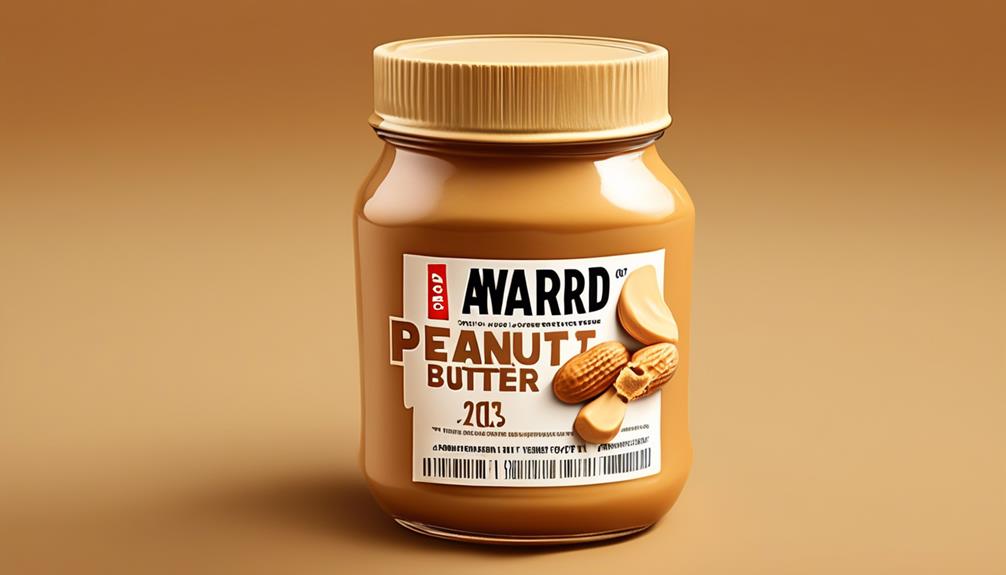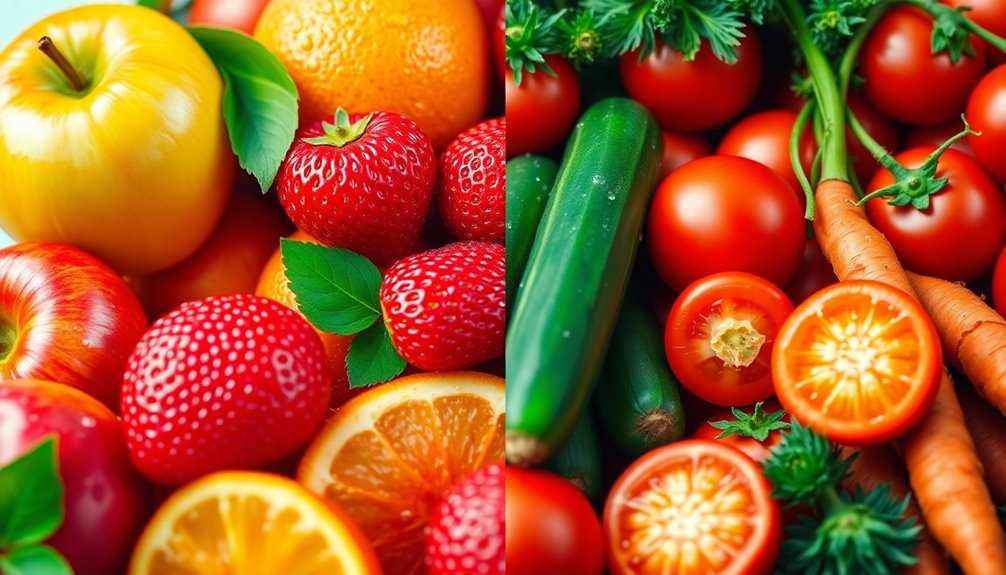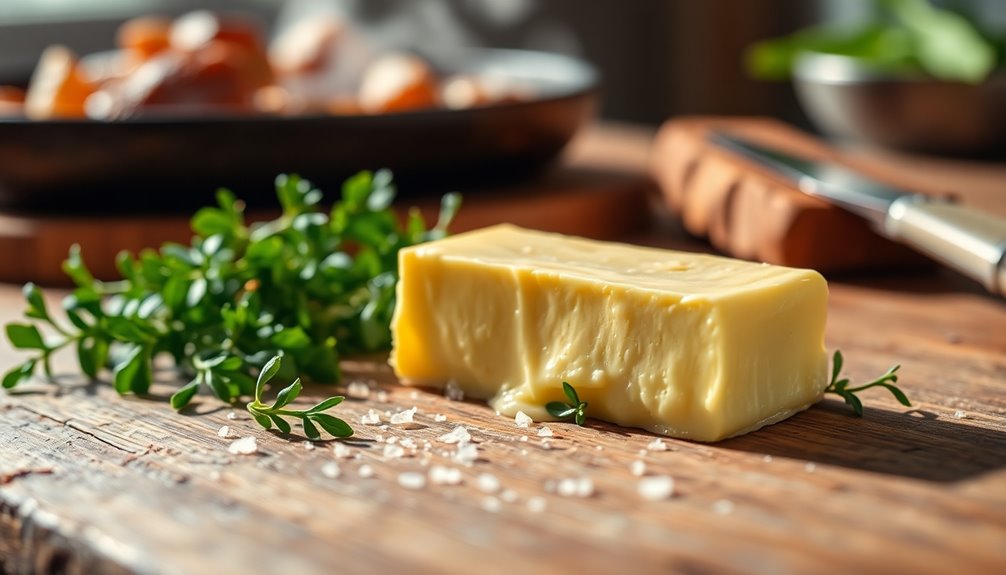Ever thought about the meaning behind the mysterious phrase “Peanut Butter Jelly Time”?
The phrase has permeated popular culture, but its true meaning seems to elude many. We've all heard it used in various contexts, from internet memes to television shows, but what exactly does it signify?
Join us as we unravel the layers of this seemingly simple yet perplexing catchphrase, and discover the surprising depth and cultural significance that 'Peanut Butter Jelly Time' holds.
Key Takeaways
- Peanut Butter Jelly Time originated as a flash animation created by Ryan Gancenia Etrata and Kevin Flynn, featuring a Dancing Banana character and the song 'Peanut Butter Jelly Time' by The Buckwheat Boyz.
- The meme gained popularity through its presence on Offtopic forums, Newgrounds, and its references in TV shows like Ed and Family Guy, cementing its place in pop culture.
- Peanut Butter Jelly Time evolved from an internet slang to a mainstream pop culture phenomenon, being referenced in various aspects of modern entertainment and daily life.
- Memes, like Peanut Butter Jelly Time, serve as powerful communication tools, conveying complex ideas, reflecting societal attitudes, and raising awareness about social and political issues.
The Origins of Peanut Butter Jelly Time
The origins of Peanut Butter Jelly Time can be traced back to a flash animation created by Ryan Gancenia Etrata and Kevin Flynn, featuring a Dancing Banana character and the infectious song 'Peanut Butter Jelly Time' by The Buckwheat Boyz. In the early 2000s, this video was posted on the Offtopic forums and later on Newgrounds by user YrebWarts. Its popularity skyrocketed, spreading to other internet humor sites and message boards.
The meme even made its way to the NBC sitcom Ed in 2002. This animation led to over a hundred derivative sites with remixes and dancing characters. Notably, it was referenced in Family Guy in 2005, cementing its place in pop culture.
This meme has had a lasting legacy in online video culture and has been recognized through merchandise and parodies based on the video. The infectious nature of the song, combined with the quirky animation, captivated the internet's attention, making it a cultural phenomenon.
The internet has a way of turning unlikely things into white elephants; in this case, an animation featuring a banana dancing to a catchy tune became an iconic symbol of internet culture.
Cultural Impact of the Phrase

With its infectious tune and quirky animation, the phrase 'Peanut Butter Jelly Time' has left a lasting impact on internet and meme culture, becoming emblematic of online humor and garnering widespread recognition. The cultural impact of the phrase is evident in its pervasive presence across various media and internet platforms.
From its origins as a flash animation featuring a dancing banana to its references in popular television shows like Family Guy, the phrase has become synonymous with online humor culture. Its catchy and humorous nature has led to numerous remixes and parodies, further solidifying its place in internet and meme culture.
The phrase gained popularity through a flash animation featuring a dancing banana character set to the song 'Peanut Butter Jelly Time' by The Buckwheat Boyz. It has been referenced and parodied in various media and internet platforms, contributing to its enduring cultural impact.
Its appearance in popular television shows like Family Guy further solidified its cultural impact, leading to a resurgence in online interest and search queries. The phrase continues to be recognized and enjoyed by people of diverse backgrounds and ages, reflecting its lasting legacy in internet and meme culture.
Interpretations and Meanings

In exploring the interpretations and meanings of 'Peanut Butter Jelly Time,' it becomes evident that the song's catchy and humorous nature has led to a range of perceptions and misinterpretations among its audience. The table below outlines some of the interpretations and meanings associated with the phrase.
| Interpretations and Meanings | Examples |
|---|---|
| Misunderstood References | Some listeners misinterpret the song's references to Tic Tac Toe and a baseball bat, leading to beliefs in hidden messages. |
| Cult Following | The song has garnered a cult following due to its comedic value and catchy melody, contributing to its lasting legacy. |
| Internet Meme | 'Peanut Butter Jelly Time' has become a popular internet meme, used in videos, animations, and parodies for comedic effect. |
| Misconceptions | The song's lighthearted nature has led to misconceptions about deeper meanings, when it is primarily a fun novelty song. |
| Cultural Phenomenon | It has transcended its initial release to become a cultural phenomenon, recognized and enjoyed by a wide audience. |
The interpretations and meanings of 'Peanut Butter Jelly Time' demonstrate the varied and sometimes misinterpreted nature of the song, contributing to its enduring popularity and impact.
Evolution of the Catchphrase

Let's explore the evolution of the catchphrase 'Peanut Butter Jelly Time.'
We'll delve into its origin and cultural impact, examining how it has transformed over time and gained new interpretations.
Understanding the evolution of this catchphrase can provide insight into its enduring popularity and relevance in modern culture.
Origin of Catchphrase
The catchphrase 'Peanut Butter Jelly Time' originated from a flash animation featuring a dancing banana and the song by The Buckwheat Boyz, created by Ryan Gancenia Etrata and Kevin Flynn and initially posted on Offtopic forums and Newgrounds.
The catchphrase gained popularity after being referenced in the NBC sitcom Ed in 2002, spreading across internet humor sites, message boards, and video-sharing communities.
It further gained recognition after its reference in Family Guy in 2005, leading to a resurgence and bringing it back into mainstream network television.
The catchphrase has become a part of popular culture and has been referenced in various media, such as the TV show 'It's Always Sunny in Philadelphia,' where Frank Reynolds performs the dance associated with the catchphrase.
This catchphrase has evolved from internet slang to mainstream pop culture, transcending its origin as a flash animation and song.
Cultural Impact
With origins in a flash animation and the catchy tune 'Peanut Butter Jelly Time' by The Buckwheat Boyz, the cultural impact of this catchphrase has transcended its humble beginnings and established a lasting presence in popular culture.
From being referenced in TV shows like It's Always Sunny, where it became popular through the character Frank Reynolds, to being used as a jingle by an 'ambulance chaser' lawyer specializing in personal injury claims, the phrase has embedded itself into various aspects of modern entertainment and daily life.
Its influence has even extended globally, as evidenced by its use in the English directly from India course.
'Peanut Butter Jelly Time' has proven to be more than just a passing internet fad, and its enduring popularity speaks to its ability to resonate with a diverse audience.
Spread of 'Peanut Butter Jelly Time

The viral spread of the 'Peanut Butter Jelly Time' flash animation, created by Ryan Gancenia Etrata and Kevin Flynn, captivated the online community in the early 2000s, leading to a wave of parodies, merchandise, and cultural references across various platforms.
The spread of 'Peanut Butter Jelly Time' was remarkable:
- The animation gained popularity through word of mouth and various internet forums, capturing the attention of a wide audience.
- It was featured in the NBC sitcom 'Ed' in 2002, bringing it to the attention of mainstream television viewers.
- The animation's ubiquity on internet humor sites and message boards, such as eBaums World and SomethingAwful, contributed to its rapid dissemination.
- Its presence on YTMND in 2004 further expanded its reach, allowing it to permeate the video-sharing community.
The 'Peanut Butter Jelly Time' phenomenon quickly became a pop culture staple, transcending its origins and making its mark on mainstream media. Its infectious nature and catchy tune made it a significant part of internet culture, demonstrating the power of viral content in the early days of online video sharing.
Memes and Internet Culture

After the widespread impact of 'Peanut Butter Jelly Time' on internet culture, exploring the realm of memes becomes vital for understanding the evolution of online trends and their influence on society. Memes have become an integral part of internet culture, functioning as inside jokes that spread rapidly across various online platforms.
The power of memes lies in their ability to convey complex ideas and emotions in a succinct and relatable manner, often through humor or irony. Memes can also reflect societal attitudes, serving as a mirror to the collective consciousness of the online community.
The influence of memes extends beyond mere entertainment; they've been used to raise awareness about social and political issues, and even as a form of protest. Memes are a manifestation of the interconnectedness of modern society, transcending geographical and cultural boundaries.
Furthermore, memes have infiltrated popular culture, with references appearing in mainstream media such as the TV show It's Always Sunny in Philadelphia. Understanding memes and their impact on internet culture is crucial in comprehending the ever-changing digital landscape and its effects on society.
Notable References in Media

Notable references to the Peanut Butter Jelly Time meme have been prevalent in various forms of media, showcasing its enduring impact on popular culture.
- The TV show *It's Always Sunny in Philadelphia* featured the meme in an episode titled 'Sweet Dee Has a Heart Attack,' where the character Charlie Kelly performs the dance and sings the song, cementing the meme's status in contemporary television.
- The meme has also been referenced in legal contexts, with the term 'ambulance chaser' being associated with personal injury claims. This reference reflects the meme's influence on language and its ability to permeate diverse aspects of society.
- In London, the concept of 'ambulance chasing' has been used metaphorically to describe individuals or companies seeking to profit from a client's damages award, often leading to a luxurious lifestyle. This illustrates the meme's impact on cultural idioms and its ability to resonate beyond its original context.
- Furthermore, the meme has been the subject of parody and homage in various media, including online videos, merchandise, and fan creations, demonstrating its enduring popularity and relevance in contemporary pop culture.
Parodies and Remixes

Parodies and remixes of the Peanut Butter Jelly Time meme have contributed to its widespread recognition and continued relevance in contemporary popular culture. The meme has been referenced in various TV shows, including 'It's Always Sunny in Philadelphia', where the characters perform a dance to the song, further embedding it into modern pop culture. Its catchy tune and nostalgic appeal have inspired countless parodies and remixes across the internet, showcasing its enduring popularity.
One notable parody is the 'Peanut Butter Jelly Time' remix by the Buckwheat Boyz. This remix propelled the meme to new heights, becoming a cultural phenomenon. Additionally, the meme has been integrated into numerous internet memes and viral videos, solidifying its place in the digital age.
The Peanut Butter Jelly Time meme has also been referenced in legal contexts, with the term 'ambulance chaser' sometimes humorously referring to someone constantly seeking compensation for personal injury claims. This humorous use of the meme adds another layer to its versatility and enduring relevance in popular culture.
Nostalgia and Pop Culture Influence

The influence of nostalgia and pop culture on societal trends, fashion, music, and entertainment is undeniable, shaping collective memory and fostering a sense of comfort and familiarity. Nostalgia has the power to transport us back in time, evoking cherished memories and emotions. It often leads to the revival of past trends and popular culture references, influencing various aspects of our lives.
Pop culture icons, including TV shows and music, play a significant role in shaping collective nostalgia, impacting the way we perceive the world around us. This influence can be observed in the resurgence of retro fashion, vintage video games, and reboots of classic movies and TV shows. The use of nostalgic references, such as the 'peanut butter jelly time' meme, not only brings back memories of the early internet but also illustrates how pop culture influences slang and internet culture. Nostalgia and pop culture influence are evident in various aspects of our daily lives, from the way we dress to the media we consume.
Legacy and Continued Relevance

With a cultural legacy deeply rooted in popular internet culture, the continued relevance of 'Peanut Butter Jelly Time' permeates various aspects of contemporary society. The phrase itself has become a slang term for a designated period of happiness or ease, reflecting its enduring impact on modern language. Its early presence in English-speaking internet circles solidified its position as a symbol of joy and lightheartedness, making it a part of the lexicon for expressing moments of simple, unadulterated happiness.
The legacy of 'Peanut Butter Jelly Time' extends beyond its linguistic influence. It embodies a sense of nostalgia for many who fondly remember its initial rise to popularity and its association with carefree, enjoyable moments. This nostalgia contributes to its continued relevance, as it serves as a reminder of the happiness and simplicity often sought in today's fast-paced world.
Furthermore, the phrase's integration into popular culture through memes and references in various forms of media ensures its ongoing presence in contemporary society. 'Peanut Butter Jelly Time' remains a symbol of joy and carefreeness, continuously resonating with people seeking a moment of lightheartedness in their daily lives.
Frequently Asked Questions
What Is the Origin of Peanut Butter Jelly Time?
The origin of Peanut Butter Jelly Time can be traced back to a flash animation featuring a Dancing Banana character and the song 'Peanut Butter Jelly Time' by The Buckwheat Boyz. Created by Ryan Gancenia Etrata and Kevin Flynn, the video gained popularity on Newgrounds and spread to internet humor sites and message boards.
It further gained traction on video-sharing platforms, leading to numerous derivative videos, remixes, and mashups, showcasing its lasting impact on online video culture.
What Is the Meaning of the Song Peanut Butter Jelly?
We understand the curiosity about the meaning of 'Peanut Butter Jelly Time.' The song's simple lyrics and catchy tune make it an enjoyable and lighthearted experience for listeners.
Its playful references to peanut butter, jelly, and a baseball bat create a fun and carefree atmosphere, often associated with nostalgia and humor.
The song's meaning lies in its ability to bring joy and entertainment to a wide audience, making it a beloved part of pop culture.
What Does PBJT Stand For?
PBJT stands for 'Peanut Butter Jelly Time,' a viral internet phenomenon featuring a dancing banana and the catchy tune by The Buckwheat Boyz. It gained popularity in the early 2000s, spawning parodies and merchandise.
The animation, created by Ryan Gancenia Etrata and Kevin Flynn, spread across humor sites and message boards. It became a widely recognized internet meme, often used for comedic effect in videos, and has developed a dedicated following over the years.
What Happened to the Peanut Butter Jelly Time?
Well, what happened to Peanut Butter Jelly Time?
It all started with a catchy song and a dancing banana. The animation gained popularity in the early 2000s and became a viral sensation.
Despite the tragic story of The Buckwheat Boyz, the song continues to have a lasting cultural impact, being remixed and parodied numerous times.
It's a timeless meme that brings joy to people of all ages and backgrounds.
Conclusion
In conclusion, 'Peanut Butter Jelly Time' may have started as an obnoxious and funny flash animation, but its cultural impact and continued relevance can't be denied.
From mainstream media references to countless parodies and remixes, the phrase has evolved into a nostalgic and influential part of pop culture.
It's amazing how something so silly and absurd can become such a significant and enduring phenomenon.
